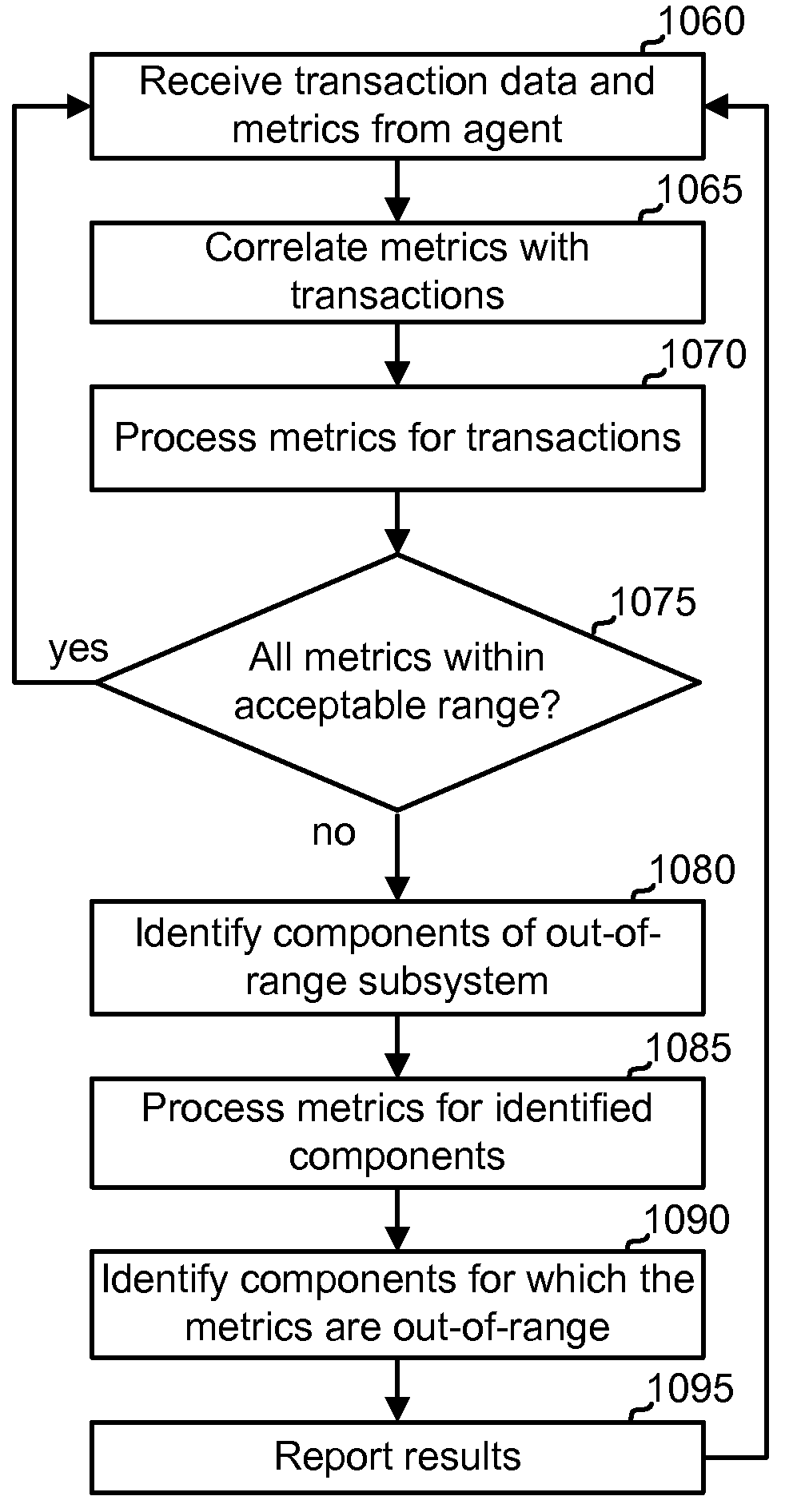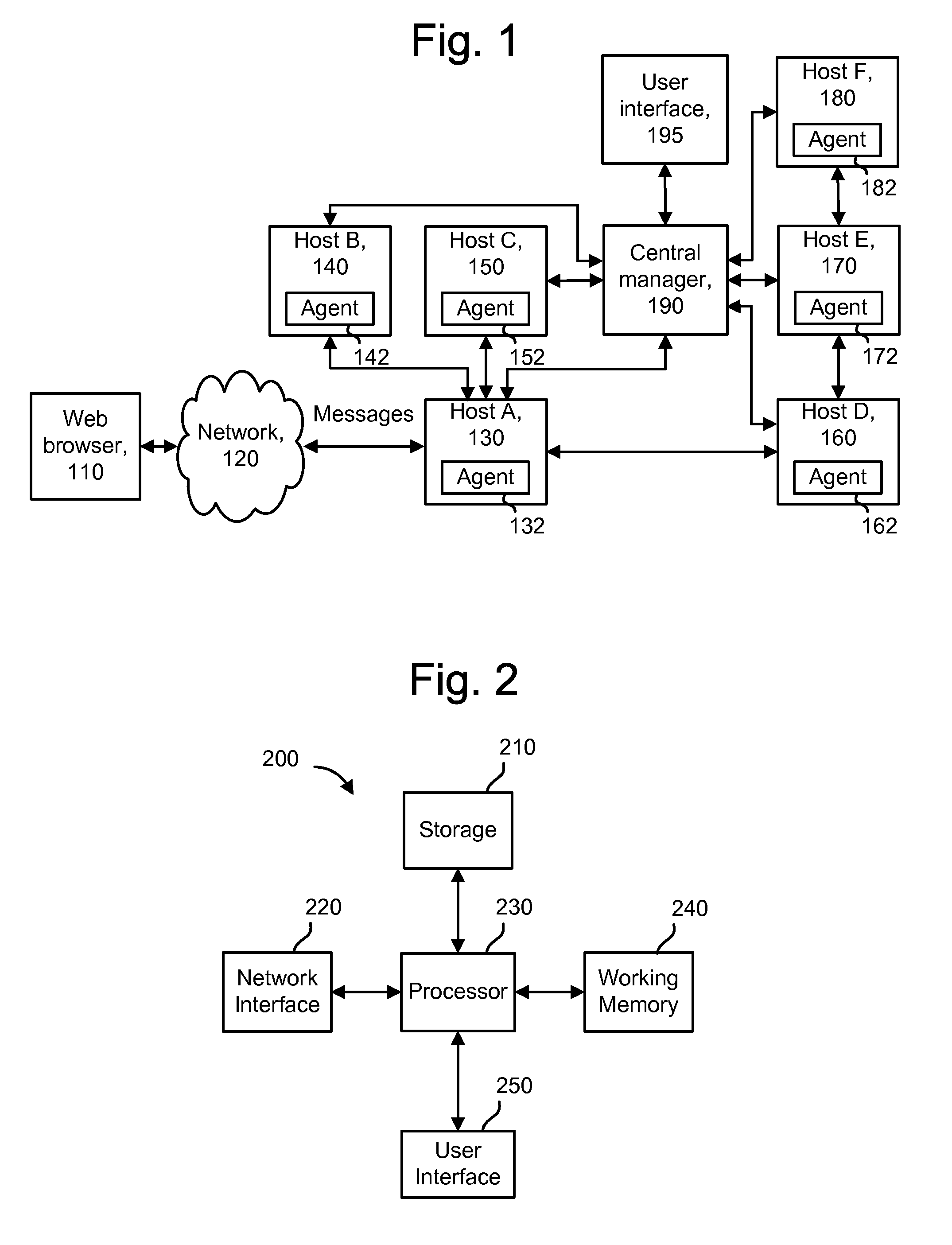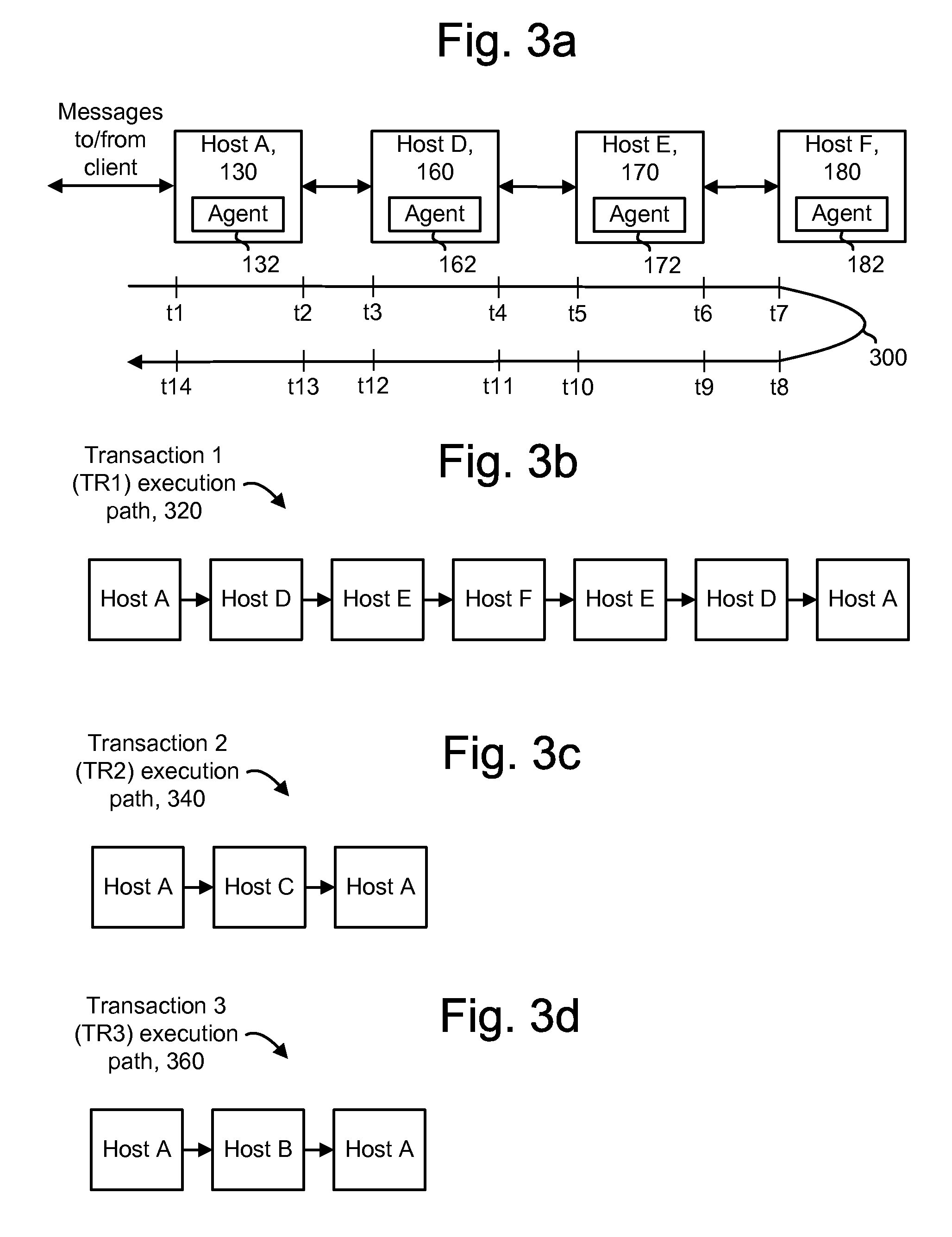Automatic root cause analysis of performance problems using auto-baselining on aggregated performance metrics
a technology of performance problems and root causes, applied in the field of automatic root cause analysis of performance problems, can solve problems such as difficult diagnosis of the root cause of a performance problem, and difficulty in identifying which subsystem or subsystem is responsible for a performance problem
- Summary
- Abstract
- Description
- Claims
- Application Information
AI Technical Summary
Problems solved by technology
Method used
Image
Examples
Embodiment Construction
[0039]The present invention provides a system and method for automatically detecting anomalous behavior in a distributed system.
[0040]FIG. 1 depicts a system in which a number of hosts process requests from a client. The system is an example of a distributed system which includes subsystems such as host computers. A client such as a web browser 110, in response to user commands, exchanges messages with a host A 130, such as an application server, via a network 120 such as the Internet. The web browser 110 typically accesses the network 120 via an Internet Service Provider, not shown. While a single web browser is depicted, it is also possible for multiple web browsers or other clients, including automated clients such as other servers, to communicate messages to / from the host A 130 as well as other hosts. In the example, host A 130 communicates with a number of other hosts. For example, host A 130 can communicate with host B 140, host C 150 and / or host D 160. Host D 160, in turn, ca...
PUM
 Login to view more
Login to view more Abstract
Description
Claims
Application Information
 Login to view more
Login to view more - R&D Engineer
- R&D Manager
- IP Professional
- Industry Leading Data Capabilities
- Powerful AI technology
- Patent DNA Extraction
Browse by: Latest US Patents, China's latest patents, Technical Efficacy Thesaurus, Application Domain, Technology Topic.
© 2024 PatSnap. All rights reserved.Legal|Privacy policy|Modern Slavery Act Transparency Statement|Sitemap



